
By Bernadette Gentry
Today, we communicate by tex-ting or email. In my day, it was through writing letters.
Receiving a letter was the source of good or bad news-the birth of a new baby, or the death of a relative who lived far away. During war time, there might be a letter from a soldier. My mother saved all my brother’s letters from World War II. He wrote a lot about the mud in the fox holes they sheltered in.
I loved everything about letter writing- es-pecially choosing the color of the ink to use in my fountain pen. I preferred green to blue or black. I bought pretty writing paper with roses or other flowers on it. (We even had stationary stores that specialized in selling paper for writ-ing letters.) We had to use blotters to keep the ink from staining our fingers. I was happy when ball point pens came in; my fingers were no lon-ger colored with ink.
I loved both writing and receiving mail. It made the sender seem so close. I would save my letters and read them over, and over again. (I still have my husband’s love letters from sixty years ago.)
Postage stamps cost 3 cents then 5 cents. At Christmas the mail was delivered twice a day!
If you left the envelope unsealed, it was a penny cheaper. Oh, what joy it was to receive a letter.
To this day, I still write letters, and personal notes on Christmas or birthday cards. As the words flow from my fingers onto the paper, I feel a deep connection to the person I’m writ-ing to. For me, the beauty of letter writing still exists.
By Clifton (Jerry) Noble Sr.
My permanent position as As-sistant Survey Supervisor for Mass. Department of Public Works in Greenfield, District 2 began Mon-day, October 9, 1961. The office rented most of the top floor of the building at 191 Main Street. The Survey room was at the very back of the build-ing. A big plus for me was being able to look out an east window down to the Boston and Maine Railroad and see trains going into the tunnel under Main Street. Because of my familiarity with all construction projects in the south half of the district it was practical for me to spend a lot of time working with men of my former survey party and with other parties assigned in that area, as well as delivering notebooks, plans, equipment and getting time sheets to the men and back for the Boston office. I even delivered paychecks.
Al Cloutier, the previous assistant lost his temporary appointment but kept driving his late model Ford state car. Looking back I suspect that District Engineer, Hugh Corr, may have re-sented Boston Civil Service giving me Al’s posi-tion, because the car he assigned to me was about ten years old and needed frequent approval for repairs at Sarat Ford in Agawam. An idea of its condition can be gained from the fact that, dur-ing the following winter, when I turned north from Westfield’s Park Square onto Elm Street, the snow shovel which lay on the back seat floor slid out onto the pavement through the rotted gap under the side door. In fact the December 1 entry in my job diary mentions my going to Sar-ats for a generator belt and bracket, new radiator cap and check of the differential.
December 1, Friday, Elizabeth and nurse Jean Watson took baby to Dr. Wonson for a polio shot.
December 2, Saturday, Baby was cheerful and playful despite temperatures of 99 and 100
He may have caught a slight cold. He woke and cried at 11 a.m. so I took him up, walked and hummed to him. He went right back to sleep. All washers and dryers at the Glen Launderette in Russell were in use so I went to Speed Queen on Elm Street in Westfield.
I make four or five trips a day to the brook for pails of water, and often saw wood in the dark.
December 3, Saturday. There were 51 in church. I took my mother, Hester, to ride, and have never seen water in Borden Brook and Cob-ble Mountain reservoirs so low. Mrs. Peckham visited. She said a friends’ well went dry.
December 4, Monday. A & P is putting in new checkout lanes. Hunters brought deer on car down Herrick Road. I delivered tire and an-tifreeze to Louis Johnson from the Northamp-ton stockroom, I went to Southwick office trailer to copy stake levels until foreman asked us to move down the road until after a rock blast had gone off.
December 7, Thursday. We took elevations on ledge in brook through the Union Street underpass. Some sandstone will have to be re-moved to make room for the proposed culvert which will allow the road on top to occupy the full width of the underpass.When trains go over stuff falls off the ceiling.
December 9, Saturday. Baby was too hot and woke us at two but got quiet right away.
December 10, Sunday. It was very slip-pery coming up brook bank with water pails. Westfield’s road through Wyben was icy when I brought mother Hester to church but Montgom-ery had sanded Main Road. E got a delicious dinner. I did 100 sit-ups and other exercises to reduce waist.
December 11, Monday. I got new chief of my former survey party, Bob Crovo, into Magnolia house where Kacavich rooms..
Dcember 12, Tuesday. I copied data from Lefax pages to a state diary since white haired George Berry says loose leaf pages are not legal.
December 13, Wednesday. DPW is going to build a new district office. The site selected is land between Routes 10 and I 91 straddling the town line between Northampton and Hatfield. I got lubrication, oil change, filter and gas at Lecrenski’s Post Office Service Sta-tion in Westfield
December 17, Sunday. Because of 8 inches of snow I walked up Herrick and Pomeroy Roads to church. Thirty came.
December 18, Monday. I got an electric sewing ma-chine at Zayers for Hester and left it at Sarah Gillett Home.
December 20, Wednesday. There was no trouble getting out with state car. At laundry Les Weidman told me Punch Bowl is a big, round swamp on the mountain south of Whippernon Country Club and west of Mount Nero.
December 22, Friday. E says baby’s two low-er front teeth are poking through. I took Crovo to Magnolia House to get his landlady’s signa-tures on vouchers as the state is paying his room rent.
December 23, Saturday. Baby is fussy with teeth. I paid Kneil bill for 14.74 gallons of fuel and left pedometer for Uncle Ralph.
December 24, Sunday. Shoveled drive and walks. 15 at church. Planned night’s music. I tried to nap in afternoon but baby raised a ruck-us. Arrived at church about 11 p.m. Mr. Morgan and Leonards were there, also Allyns.
December 25, Monday, Christmas. Baby took a good nap 10 a.m. To 1:30 p.m. E put him in snow suit to go to Westfield. Mother Atwa-ter gave him a “Little Drummer Boy” music box and he loved it. We all exchanged gifts. E and I took Hester back to Sarah Gillett Home at 5 and stopped to show baby to other ladies in dining room.
December 26, Tuesday. I tried to go north up road but couldn’t make it through drifted snow so went round by Route 20 through Russell and Huntington. Wylie Hubbard has left DPW to be Springfield’s superintendent of streets which pays about $12,500 a year.
December 27 Wednesday. Baby is fussy prob-ably from gas pains. Sale of Crovo’s Burlington house is still held up by grantee’s lawyer’s ques-tion of title. In Deep River, Connecticut, Louis Johnson’s mother fell on stairs Christmas day so he has been missing. Drips from the roof are fill-ing pails which saves my going to the brook to make up for low well water/
December 28, Thursday. Pedometer I gave Uncle Ralph didn’t work. I prayed about where to get another at once. All places were vetoed except Elm Cycle. Uncle R said they didn’t have pedometers, but there was one in window same make as his gift, only $6.50, and it worked. Jean Watson did our wash but road was too slippery for her to bring it back so I had to pick it up.
December 29. Friday. Cousin Lester is try-ing to get a replacement for the diamond ring E flushed down the toilet.
December 30, Saturday. Rock salt melts driveway ice. I ordered subscription for 12 monthly copies of Volunteer Choir, $17.50 for church. Baby can creep and stands firmly in his bouncing chair,
December 31, Sunday. We’re measured for choir robes. Bruce Morgan’s full time professor-ship at Amherst College prevents his continuing as minister here. Played “Grand Canyon Suite on record player for baby. He liked it except for the thunder clap in “Cloudburst” section.
By Dave Roberts, Salmon Brook Historical Society
As another holiday season settles over Gran-by, Connecticut, it’s hard not to wonder what Christmas in our town felt like a century ago. In 1925, Granby was still a largely agricultural community, dotted with family farms, small crossroads stores, and tight-knit neighborhoods that depended on each other in ways that might surprise us today. The world was modernizing rapidly—radios were entering living rooms, automobiles were becoming more common, and electricity was beginning to brighten more households—but the rhythms of Christmas still held to traditions shaped by the previous cen-tury.
Looking back through our archives at the Salmon Brook Historical Society (SBHS), along with recollections preserved in family papers and local histories, we can imagine the spirit of Christmas in Granby 100 years ago: simpler in many ways, but just as heartfelt as today.
A Town Preparing for the Holiday
In 1925, the first signs of Christmas arrived not in the form of glowing storefront lights or crowded shopping centers, but rather in the pages of the Hartford Courant, on hand-painted signs in Granby’s small shops, and in the com-munity gatherings that marked the season.
Small general stores—like those that once stood in West Granby, North Granby, and Granby Center—carried holiday staples: orang-es, nuts, peppermint candy, baking spices, and, for the fortunate, a few imported goodies like figs or chocolate. For farm families who raised much of their own food, Christmas baking was a central event. Recipes for molasses cookies, spice cakes, mincemeat pies, and hearty breads were pulled from memory or well-worn cook-books.
Christmas trees were becoming more com-mon by the 1920s, though many families still cut their own from woodlots or back acres. Ev-ergreen boughs, simple candles (later replaced by safer electric lights), and handmade orna-ments—often paper, fabric, or tin—were the norm. Many families placed their tree on Christ-mas Eve, keeping alive an old New England tra-dition.
Churches at the Heart of the Celebration
Granby’s churches were the true hub of the holiday. In 1925, congregations at First Congre-gational, South Congregational, and other local churches gathered for pageants, choir perfor-mances, and candlelit services.
The Sunday School Christmas program, in particular, was a cherished annual highlight. Children memorized their lines weeks in ad-vance, parents bundled them up in thick wool coats for the evening performance, and families packed the pews to see their youngsters recite poems, sing carols, and reenact the Nativity.
One tradition mentioned in several local memories is the giving of Christmas treat bags after the service—simple paper sacks holding an orange, a few candies, and sometimes a small toy or pencil. For many children, it was one of the season’s happiest surprises.
Community, Charity, and the Spirit of Giving
Granby, like most small towns of the time, took care of its own. Although social services were limited, neighbors were quick to help neighbors. Church groups and Granges, like Granby Grange #5, organized quiet efforts to deliver food baskets or warm clothing to fami-lies who had fallen on hard times.
A hundred years ago, it wasn’t uncommon for local farmers to share from their own cel-lars—potatoes, apples, winter squash—or for women’s groups to sew mittens and scarves for families in need. These acts of generosity of-ten went unrecorded, but they formed the true backbone of the holiday season.
Christmas on the Farm
For many Granby families in 1925, Christmas morning began early—not with opening gifts, but with chores. Animals still had to be fed, cows still needed milking, and wood stoves still had to be tended before celebrations could be-gin.
After chores, children might find one or two modest gifts—perhaps a new book, a set of mar-bles, a knitted scarf, or a well-loved metal toy. A “store-bought” doll or pocketknife was consid-ered a treasure. Handmade gifts were equally cherished, whether a quilt from a grandmother, a carved wooden toy, or clothing carefully sewn for the holiday.
Meals were a festive affair. Roast pork or chicken was common; turkey was enjoyed but not universal. Root vegetables from the cellar, homemade pickles, fresh rolls, and pies filled the table. Families often visited neighbors or relatives later in the day—sometimes by sleigh if the snowfall cooperated.
A Town on the Cusp of Change
By 1925, the quiet rural character of Granby was beginning to shift as modern conveniences slowly spread. Automobiles made holiday trav-el easier, despite roads that were still mostly un-paved and used by horses, wagons, and farm equipment. Radios introduced new traditions—carol broadcasts, Christmas messages, and sea-sonal music that brought the wider world into Granby living rooms for the first time. Fami-lies gathered around their radio—still a luxu-ry item—to listen to local Hartford choirs and bands, Christmas Eve church services, seasonal greetings from community leaders, and chil-dren’s stories and carols, all broadcast by WTIC, which had first gone on the air that February.
Yet the essence of Christmas remained rooted in community. With far fewer distractions and a pace of life still shaped by the seasons, families focused on togetherness, reflection, and grati-tude. Children might spend the afternoon sled-ding down a hill or skating on a frozen pond, returning home with rosy cheeks to warm up by the fire.
A Legacy That Endures
As we celebrate Christmas today—sur-rounded by bright lights, busy schedules, and the conveniences of modern life—it’s worth re-membering the quieter, simpler traditions that shaped our town 100 years ago. The people of Granby in 1925 celebrated with fewer things but often with a deeper sense of connection: to their families, to their neighbors, and to the land they worked.
At the Salmon Brook Historical Society, we have been grateful since 1945 to preserve the stories, objects, and memories that help us trace this continuity across generations. The holi-day season is a reminder that while much has changed in the last century, the heart of Christ-mas in Granby—community, generosity, and warmth—remains the same.
From all of us at SBHS, may your holiday sea-son be filled with the same spirit of togetherness that Granby families cherished a century ago.
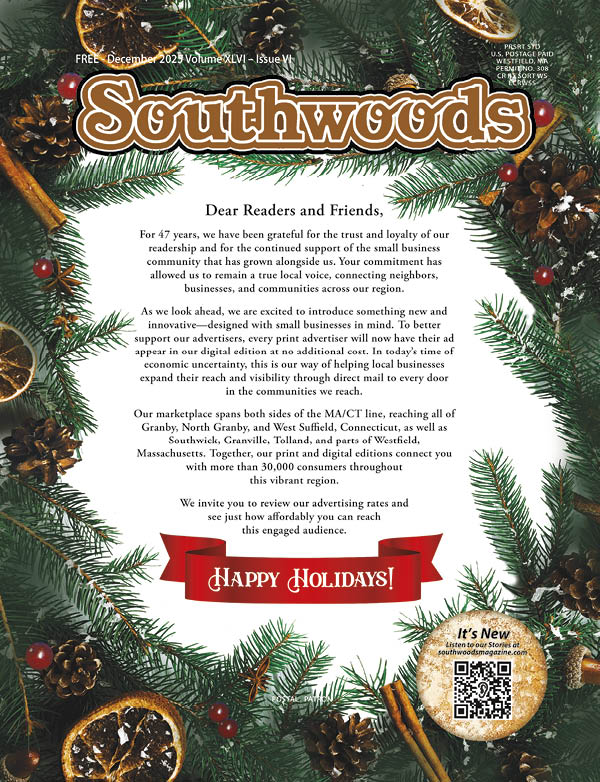

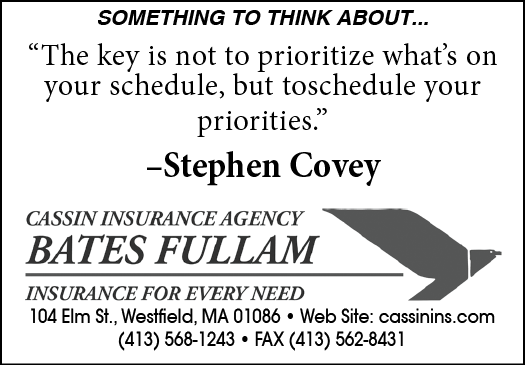




December 2014
DECEMBER
1961
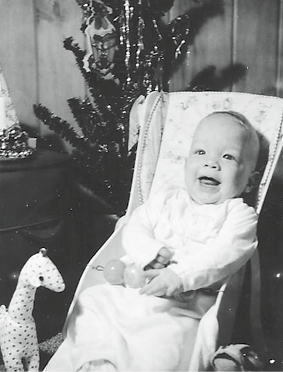


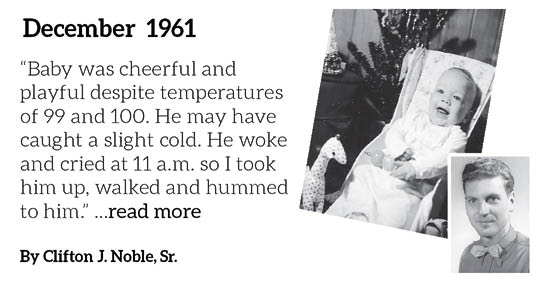
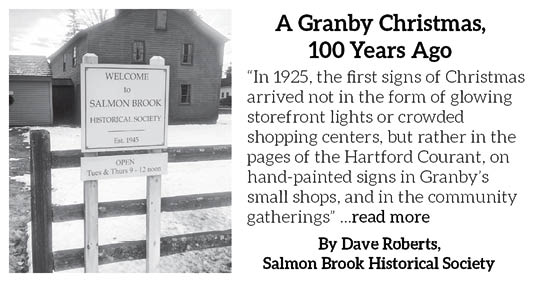

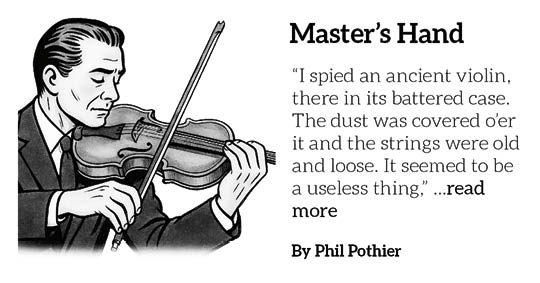
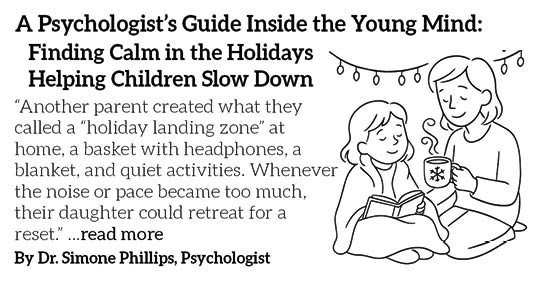


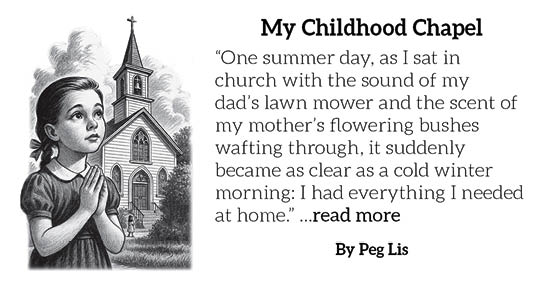





Letter
Writing


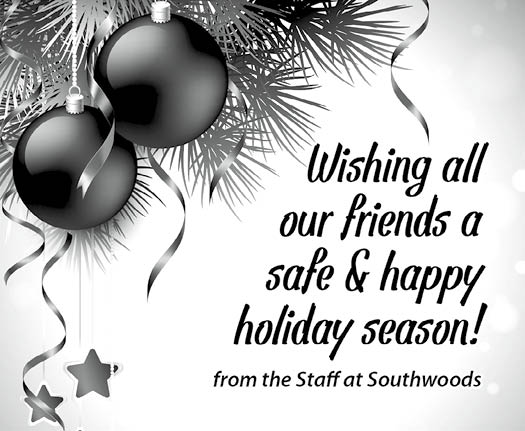










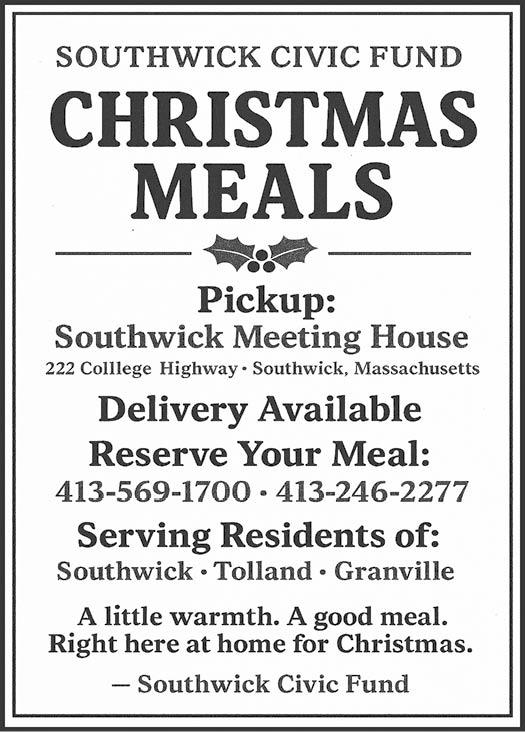
A Granby Christmas,
100 Years Ago
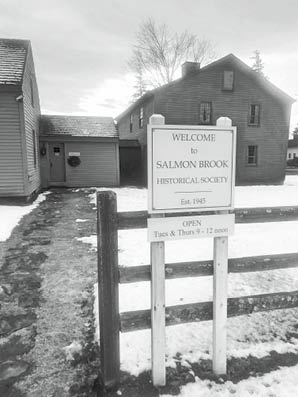
Entrance to Salmon Brook Historical Society Main Campus at 208 Salmon Brook Street, Granby, CT

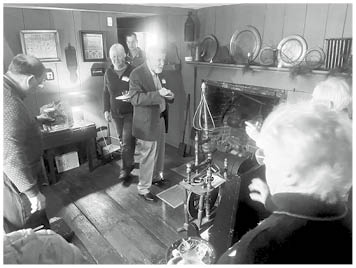
Above: Weed-Enders’ house, dating from 1790, on our Main Campus
Left: Our annual Wassail festivity on the Main Campus each December



I cleaned the upstairs closet just a few short days ago.
It seemed that there were many things of which I didn’t know.
And way back in the corner hidden in a little space
I spied an ancient violin, there in its battered case.
The dust was covered o’er it and the strings were old and loose.
It seemed to be a useless thing, no value and no use.
But, Oh, the memories it brought of happy days gone by.
I thought about long years ago. It nearly made me cry!
Long years ago it was my dad’s, and how he made it sing!
I tried it, but it was no use, I couldn’t play the thing!
I picked it up and tuned the strings, and rosined up the bow.
But ‘twas no use, I gave it up, I couldn’t make it go.
And then I knew no mater what I did or what I planned,
That violin would never sing, but in an expert hand.
It must be tuned. And played with love, and practiced every day.
A novice cannot do the job, however try he may!
That’s true of life, It’s out of tune, no one can stand alone.
We need the harmony of friends to give the proper tone.
There is a greater pow’r above, to help us as we stand.
The tones are only sweet and true played by the Master’s hand!
By Michael Dubilo
This is a story about an unlikely forest creature who once helped save Christmas for a very special group of children.
It all happened many years ago, back in a time when we were young, waiting for Santa to arrive on Christmas Eve. Beautiful handmade toys were carefully stowed in the giant red sack, the sleigh was polished to a brilliant shine, and the reindeer were fed and rested. Santa, dressed in his red and white suit of fur, stepped out of the workshop, gave Mrs. Claus a hug and kiss, and then mounted the sleigh. The reindeer gal-loped forward, and soon the vintage sled was lifted high into the air.
During his journey, Santa received the grace of eagle-like vision—special eyes that could clearly see two miles away, even at night. Large, open, snow-covered fields came into view, so Santa slowed the reindeer’s speed, taking in the wonderful sights.
Now, in the middle of the night, most wild-life was fast asleep, but one creature was still stirring. A young red fox roamed about, look-ing for a quick meal before settling down. With his eagle’s vision, Santa watched him as he ran from place to place, searching the bushes for a snack. As Santa watched, the little fox poked his head into a clump of bushes and stepped forward. A loud scream was heard as the fox jumped up in shock—his leg had been caught in the thick rope of a hunter’s snare.
Santa felt compassion for the animal, so he quickly landed his sleigh. Cautiously, he ap-proached the little fox, who seemed scared but still friendly. In his eyes was a look of sadness, as if he were asking Santa to help him. Santa slowly walked up to the snare. Santa carefully loosened the rope and set the little fox free.
The red fox licked his freed leg, then looked up at Santa and gave a wide smile. Santa gave him a friendly pat on the head and a gentle rub behind the ears. The fox followed Santa back to the sleigh. Santa saw him, smiled, and wagged a finger back and forth at the fox before climb-ing up into the sleigh. The fox looked longingly at Santa, but Santa cheerfully wagged his fin-ger again and picked up his whip. However, as soon as Santa turned his attention to the rein-deer, the little fox swiftly and quietly scurried onto the back seat of the sleigh and hid down by the floorboards.
Secretly hidden, the fox noticed an old red-and-white fur hat, much like Santa’s but a little too small for him. It probably belonged to one of Santa’s elves, but it was a perfect fit for a wily red fox, so he secured it onto his head.
The night crept onward as Santa made more stops. The little fox loved every moment and hoped the journey would never end. He grew tired, though, and finally settled down into the floorboards for a nap. When he awoke, he heard Santa talking to his reindeer: “This is it, my cari-bou friends—the last destination with deliver-ies, and then we can travel back home.”
The large brick building in the distance was an orphanage, twenty children in residence. Special indeed, for widows and orphans were to receive the foremost care. Santa’s sleigh landed just outside the old brick building. He reached into his sack to get the last of his toys, but his hands came up empty. He looked down into the sack—there was nothing there! Somehow he had miscounted and was short by exactly the number of toys needed for the orphanage.
Santa was stunned. “How could I have mis-counted? I checked that list—checked it twice. Every child, every girl and boy, should have had a toy. How could this have happened?”
The little red fox heard Santa sulking and wanted to help. Mr. Fox slid to the front seat and rubbed gently against Santa, hoping to cheer him up.
“You?” Santa said in surprise. “What are you doing here? Ho, ho, you look so cute in that hat, you sly little fellow!”
The fox was encouraged. He had made Santa feel better, but what about the children in the orphanage—the ones who would wake up with no toys? He wanted to do something for them, too. “I don’t have time to get to the North Pole and back before they wake up,” Santa sighed.
Now, many people do not know this, but Santa can speak to and understand the wild ani-mals of the world. This ability is a very special gift, meant to be invested for others. Pondering the situation, the little fox said, “Allow me to as-sist you, kind sir. If you will loan me this fine cap and a bell harness from one of your deer, I shall greet and entertain the children while you return home for their presents. I will keep them happy and occupied until you arrive. I am con-fident of that.”
Santa was surprised. A fox, entertaining young children? It was a strange idea, but with-out other options, he agreed. “The opportunity is all yours,” Santa said as he fastened a bell col-lar around the fox’s neck and adjusted it for a close fit. “I shall return as quickly as I can!”
The fox jumped down from the sleigh, gave Santa a nod, and watched as the sleigh take to the sky. He then scurried over to the orphanage and found an open window in the back. Slip-ping in, he made his way into the front parlor and curled up in front of the Christmas tree. A boy named Mikey was the first to wake and ran to the decorated tree. The fox stood up and be-gan dancing. He dashed and spun, making his own Foxtrot. As the other nineteen children ran in to the room, he encourage them to dance as well. Shaking the bells on his neck, Foxy danced to the beat of jingle bells. The sounds amused the children and they sang along as foxy danced. When all became quiet, the girls and boys chimed in, “He’s Santa Fox—Santa Claus’s little helper!”
Foxy played with the children until a sudden loud knock on the wooden door rocked the or-phanage. The door swung open, and there stood Santa Claus with a heavy bag full of presents. As the children opened their gifts, Santa knelt down and pet the head of the little fox, thanking him for saving Christmas.
On this night one little fox learned, that no matter who you are, we can all bring happiness to others in time of need. Joy to all and to the world!
December often sparkles with joy — holi-day lights twinkling in the windows, fa-miliar songs on the radio, and family traditions that children look forward to all year long. Yet be-neath the magic, this month can also be one of the most emotionally demanding for kids. With busy schedules, routines thrown off, and excitement building, it’s no surprise that children sometimes end up with extra tears, tantrums, or sibling argu-ments.
Parents may notice that their child seems more irritable, clingy, or anxious than usual. Some kids bounce from one activity to the next, unable to settle, while others withdraw when the noise and busyness become too much. The truth is, children feel the pace of the season in their bodies and emotions long before they can put it into words.
Why December Feels “Too Big” for Kids: Excite-ment often builds daily, and without downtime, it can tip into hyperactivity or restlessness. Routines are disrupted as bedtimes slip later, mealtimes shift, and predictability, which grounds children, gets lost. Holiday concerts, school parties, and family gatherings can lead to social exhaustion, draining even the most outgoing kids. Not every gift, event, or interaction lives up to a child’s ex-pectations, and disappointment or comparison with siblings and peers can magnify those feel-ings. On top of this, children may feel pressure to perform, whether it’s reciting lines in a school play or “being on their best behavior” at gather-ings. When children act out during the season, it’s rarely because they’re ungrateful, it’s because their nervous systems are overwhelmed.
Strategies for Protecting Calm and Connection: One way to protect calm is to anchor the day with a consistent ritual, such as cocoa after school, a family walk, or a bedtime story. These small rou-tines signal stability in a month of change. Parents can also involve children in decision-making by asking, “What two traditions do you want to keep most?” Allowing them to choose what to skip re-duces pressure while teaching prioritization.
Helping kids notice early signals of overwhelm, knots or butterflies in the stomach, fidgety hands, or a face that feels “too hot”, can be paired with resets like deep breathing, stretching, or holding something soft and cuddly. Balancing stimulation with soothing experiences is equally important: after a loud event, dimming the lights, lighting a candle, or inviting quiet coloring or puzzles can prevent bigger meltdowns.
Setting realistic expectations also helps. For ex-ample, preparing children by saying, “The party will be loud, and we’ll stay about an hour,” reduc-es surprise and disappointment. Finally, building in recovery days with “nothing time” between events gives kids’ brains and bodies the chance to recharge.
A Parent’s Perspective: One family noticed their six-year-old son became increasingly anx-ious about holiday concerts at school. Instead of pushing him to “be brave,” his parents reached out to his teacher to brainstorm alternatives. To-gether, they gave him the option of being a stage helper — holding props and setting up chairs. This shift in role allowed him to participate with-out the pressure of performing, and by the end of the season, he proudly told his teacher, “I still helped, just in my way.”
Another parent created what they called a “hol-iday landing zone” at home, a basket with head-phones, a blanket, and quiet activities. Whenever the noise or pace became too much, their daughter could retreat for a reset. Over time, she learned to recognize her need for breaks before meltdowns happened.
Quick tip for parents: protect sleep. Even thir-ty minutes less rest a night can make kids more emotionally fragile. Guarding bedtime routines is one of the most effective ways to prevent holiday stress.
Try this at home: at the end of each week, invite your child to draw or write about their favorite moment of the season so far. Looking back helps them savor joy instead of rushing past it.
School collaboration tip: if your child struggles with overstimulation during classroom celebra-tions, talk with their teacher about small adapta-tions such as a quieter seat in the room, the option to step out for breaks, or giving them a simple “helper role” during events. These supports re-duce stress while keeping kids engaged.
The Bigger Picture: December can feel like a season of “more”. More events, more noise, more expectations. But children thrive when families make intentional space for “less”. Less rushing, fewer obligations, quieter rituals. Finding calm doesn’t diminish the magic of the holidays; it deepens it.
By slowing down, setting limits, and prioritiz-ing meaningful moments, we teach children that joy doesn’t come from doing everything. It lives in the quiet, meaningful moments of togetherness that children carry with them long after the sea-son ends.
Every family has their own special Christ-mas traditions that they carry out year af-ter year: maybe it’s a game of Pictionary after opening gifts, or the delicious punch your mom makes for holiday parties. The Drummond fam-ily, for instance, always wears matching Christ-mas pajamas and savors Ree’s famous dishes like cinnamon rolls and biscuits and gravy. Be-yond family customs, each country has its own cultural traditions that make the season unique.
While certain aspects of Christmas—twin-kling lights, carols, or church services—look fa-miliar across the globe, many places celebrate in ways you may not expect. Food is often at the center of these traditions. In Mexico, tama-les are the highlight of holiday feasting, while in Ukraine families gather for a twelve-course Christmas dinner, each dish honoring one of the apostles. Poland waits for the first star to appear in the sky before beginning their Christmas Eve meal, a reminder of the star of Bethlehem. Ja-pan has developed a modern twist: Christmas dinner often means buckets of Kentucky Fried Chicken, complete with salad, cake, and fried chicken “Party Barrels.” England celebrates with mince pies—small pastries filled with dried fruit—left out for Santa instead of cook-ies. Fruitcake, a staple across the world, has an-cient roots in Egypt, where it was considered essential for the afterlife. In China, apples are the gift of choice, given because the word for “apple” sounds similar to the word for “Christ-mas Eve.” And in Mexico, the whimsical “Night of the Radishes” sees residents of Oaxaca carv-ing nativity scenes into radishes and displaying them at the Christmas market.
Decorations and symbols also vary widely. In Germany, families may hide a pickle orna-ment deep in the tree’s branches; whoever finds it earns a bonus gift or good fortune. Sweden celebrates with the Yule Goat, a symbol dating back to the 11th century, now seen as ornaments or even giant yard displays. Flowers play a role too: while poinsettias are the traditional Christ-mas flower in the United States, Costa Rica fa-vors orchids, and New Zealand celebrates the bright red blooms of the Pohutukawa tree as its Christmas symbol. Piñatas, often associated with Mexico, take on extra sparkle during Christmas. Traditionally shaped like seven-pointed stars, they symbolize breaking free from sin and are filled with candy, fruit, and peanuts.
Gift-giving customs differ across countries. In Germany, Saint Nicholas visits on December 5, leaving coins or fruit in children’s shoes—or sticks if they’ve been naughty. The Netherlands has a similar tradition, with children placing shoes by the fire for “Sinterklaas,” often leav-ing carrots for his horse, Amerigo. In the Czech Republic, Santa delivers presents on St. Nicho-las Eve, December 5, rather than Christmas Eve. Russia’s “Father Frost,” accompanied by a snow maiden, brings gifts on January 7, when Russians celebrate Christmas. England adds a playful twist with Christmas crackers—bright cardboard tubes filled with toys, paper crowns, and jokes. When pulled apart, they make a loud crack, and the winner claims the prize. Iceland offers a cozy tradition: families exchange books on Christmas Eve, then spend the night reading together by the fire while enjoying sweet treats.
Activities can be just as unique. In Venezuela, residents of Caracas roller-skate to church on Christmas morning, with streets closed to traffic for the occasion. In Finland and Sweden, fami-lies relax in saunas on Christmas Eve, soaking up warmth during the cold season. Australia celebrates Christmas in the summer, with Santa arriving on a surfboard instead of a sleigh. Fam-ilies head to the beach for barbecues and wave-catching. Scandinavian countries mark Decem-ber 13 with St. Lucia Day, often seen as the start of the holiday season. The oldest daughter in each family dresses in a white gown and wears a crown of twigs and candles, symbolizing light in the darkness. Norway has a more mystical tradition: families hide their brooms and mops on Christmas night to prevent witches and evil spirits from stealing them to fly through the sky.
Even the words we use to celebrate differ. In England, people often say “Happy Christ-mas” instead of “Merry Christmas,” a phrase popularized by King George V in his 1932 royal Christmas message.
Whether it’s carving radishes, savoring ta-males, hiding ornaments, or skating to church, Christmas traditions around the world remind us that the holiday is about joy, creativity, and togetherness. Each culture adds its own flavor, but the heart of the season remains the same, celebrating with those we love.
A Foxy Santa


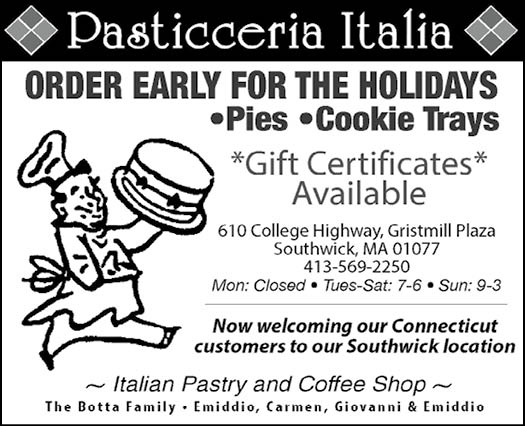

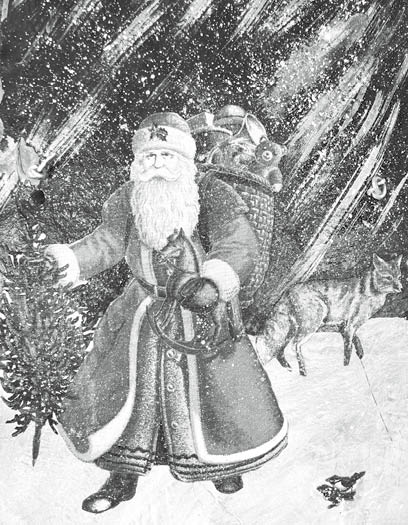


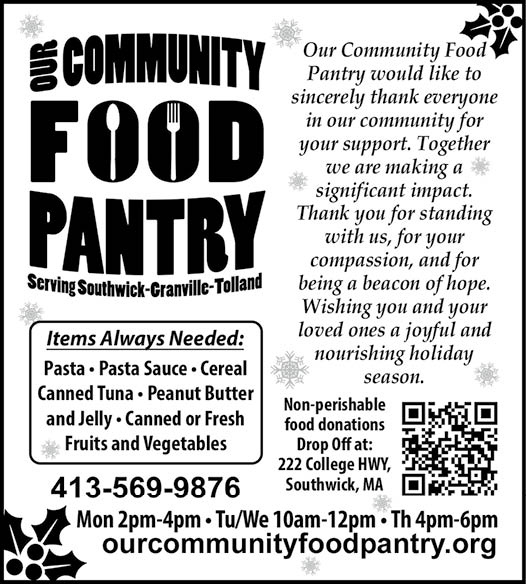








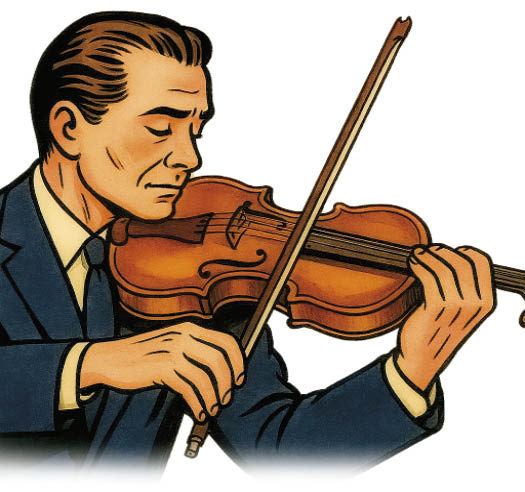
A
Master’s Hand
by Phil Pothier
Finding Calm in the Holidays
Helping Children Slow down
By Dr Simone Phillips, Psychologist
A Psychologist’s Guide
Inside the Young Mind:








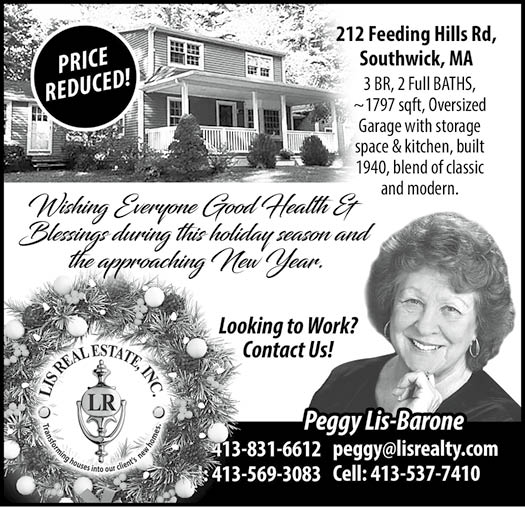
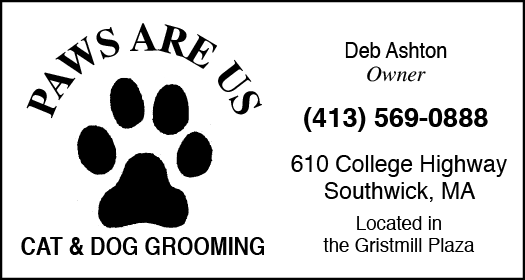

Home for Christmas
I heard about a dad who returned from a business trip just in time for Christmas. He was so excited—he wanted everything to be perfect!
But when he walked in the door, his wife was all out of sorts. “It’s Tyler,” she said. “He’s angry, and he won’t come out from under his bed.”
So Dad went into 7-year-old Tyler’s room. He bent down, looked under the bed, and said, “What’s the matter, buddy?”
Silence.
“Tyler, can you come out and talk to me?”
Silence.
“Well, if you don’t come out… I’m going in.”
And that’s just what he did. Because Tyler wouldn’t come out from under the bed, Dad crawled under that bed with him.
What was Dad doing? Getting down on his level. Entering into his world. Seeing life from his perspective.
And that’s just what God did at Christmas. Many years ago, in the little town of Bethle-hem… on a silent night… God entered our world. He got down on our level. He saw life from our perspective.
This is the big point of Christmas: God came to us.
You say, “Jeff, I don’t feel like God is with me. I don’t feel close to God. How do I connect with Him?”
The answer is simple: You just open your mind and your heart, and you talk to Him like you would a friend.
You can be like the old fellow I heard about. There was an old man who was unhappy and unhealthy. He barely ever left the house.
One day he said something kind of surpris-ing. He said to his daughter, “I think I want to talk to a pastor. Can you call your pastor and see if he’ll come over here?”
She said, “Sure, Dad. I’ll call him for you.”
The pastor came over, and the old man said, “Here’s the thing. I’m going downhill. I’m sick and tired. I’m unhappy and unhealthy. I can’t sleep at night. How can I deal with all my prob-lems?”
The pastor said, “You need to talk to God—tell Him what’s bothering you.”
But the man said, “How? I don’t know how to talk to God.”
The pastor pulled up a chair, sat down, and started a conversation. He asked the old man about his life—his work, his family, his health. Then, after the conversation started flowing, the pastor said, “Well, you talk to God the same way you talk to me. You don’t have to say anything formal. You don’t have to say anything fancy. Just tell God what’s on your mind, what’s both-ering you.” Then the pastor took a chair and moved it right next to the man’s bed. “When I leave, just picture Jesus sitting in that chair. Talk to Him like a friend.”
The next morning, the pastor got a phone call. It was the old man’s daughter. She said, “It’s my dad… He died during the night. But there was one thing that was very strange. When I found him this morning… his head was resting on the chair beside his bed.”
You see, he had opened his heart to Jesus. And when death came, like a child, he just peacefully laid down his head on Jesus’ lap.
My friend, open your heart to God. Do it to-day. Do it now. God has already come to meet you halfway. God already got down on your level. God came to you.
But there is a second part to this: One day you will go to God. This is the sweet, simple message of the Bible—the entire Bible in a sin-gle sentence: God came to you, and one day you will go to God.
You know, when that little baby in the man-ger grew up, He never forgot where He came from. He remembered what Heaven was like. He had walked those streets. He had seen the glory. He had felt the wonder. He saw it all with His own eyes. And here is what He said to us…
“Don’t be afraid! In My Father’s house are many mansions. If it were not so, I would have told you. I will go there and prepare a place for you. And then I will come back and get you, and take you to be with Me.” (John 14:1–3)
When you need a friend the most, when death is breathing down your back, Jesus has sworn to you that He will not forget you. He will come to you, lift you in His gentle arms, and carry you home. He has already prepared a place for you.
Here is the simple but powerful fact: God came to us, and one day we will go to God.
I think of Jerome. Jerome wasn’t a member of our church. In fact, he and his wife lived in North Carolina. But Jerome gave his life to Christ after he read my book Fall Guy, and he contacted me to let me know how much it changed his life.
Six months later, Jerome lay on his deathbed, his wife beside him, holding his hand. Moments before he died, he looked into his wife’s eyes. He reached up and placed his hand gently upon his wife’s cheek. And he said, “Soon… soon… I will touch the cheek of Jesus.”
And so will you. You will walk through the gates of glory… You will see your loved ones… You will see your God, eye to eye and face to face. And you will touch the face of Jesus.
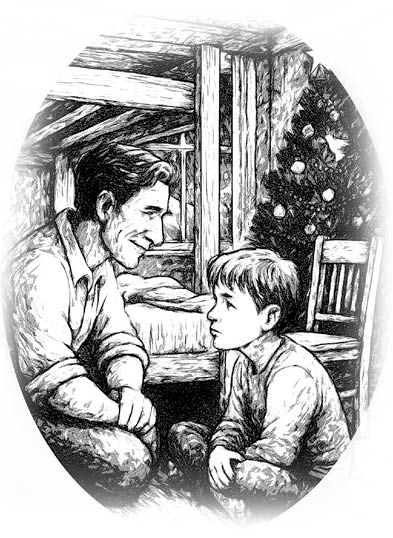






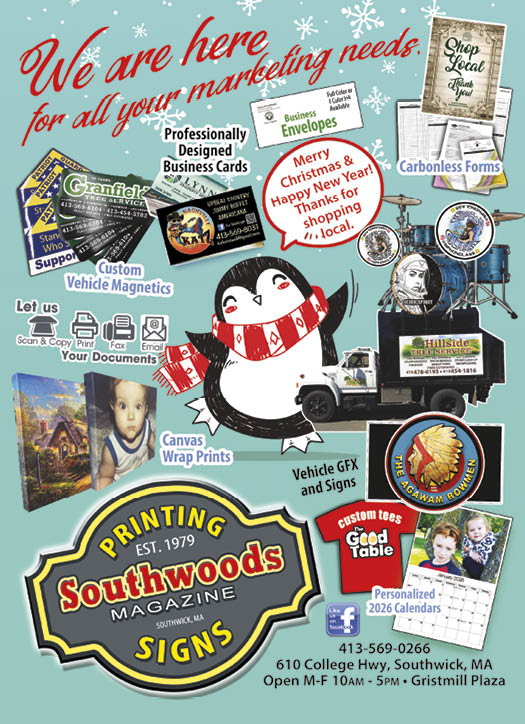
By Peg Lis
I have often pondered my unusual quests as a child. Per-haps it was the fact that we lived in the for-mer rectory next door to the church, or the ancient rites of the services and Masses, or may-be the odor of hot wax candles and smoky incense mixing with the fragrance of my mother’s lilac bushes outside the open window. Whatever the reason, for as long as I can remember, I loved being in my wonderful, bright, peaceful white church in my own backyard.
The magic of Christmas and Midnight Mass gave way to the loneliness of Good Friday, and then the sweet excitement and glory of Easter morning. My church became my neighborhood haunt, and the statue of Mary near my side yard was a daily reminder of who my personal best friend and confidante was—and still is to this day.
The fascination of my sister and me peek-ing into the forbidden confessional booth, then hearing each other’s confessions of “murder and mayhem,” along with our growing curios-ity about the sacristy, the vestments, and the vessels—and wondering where that wine could possibly be—led me on more than one adven-ture through St. Thomas Church. On rare occa-sions, we would, by some miracle, have an extra nickel, and we would light every candle at the altar while praying for the souls in purgatory. This, of course, caused problems with our vari-ous priests, who somehow always knew it was us!
I do not know exactly when I decided to be-come a priest, but I knew in my heart that it was my divine calling. The idea of entering the priesthood crept through my mind like vines on a trellis and would not be eradicated. I pictured myself in long white vestments, sweeping past my parishioners as they gasped in awe while I made my way to the altar.
One summer day, as I sat in church with the sound of my dad’s lawn mower and the scent of my mother’s flowering bushes wafting through, it suddenly became as clear as a cold winter morning: I had everything I needed at home. In my mind, my first Mass was already launched. Luckily, I had my sister Nancy to assist me and my two younger sisters in my care. I had a cap-tive congregation—a wonderful asset for the first woman priest.
The first order of business was vestments: one old black dress of Grandma’s, a white blouse beneath for collar effect, and then Mom’s pretty green bathrobe to complete my transformation. Lo and behold, I approached the living room and saw my mom’s small maple table with a white doily—and thus a perfect altar was cre-ated. My ordination was at hand.
I visualized Mom’s white lace curtains as per-fect communion veils for my two little sisters. Then my mind began whirling like a dervish as I set up for my first service. I immediately gath-ered grape Kool-Aid, Bond bread, Grandma’s old donut cutter, a bottle of Mazola oil, Mom and Dad’s crucifix, and the sacraments started falling into place. I then made the most excit-ing discovery of all—Dad’s ashes from his Old Golds in the ashtray.
My thoughts galloped like a wild stallion as I considered how lucky my younger sisters were to be set straight on a direct path to heaven. I could scarcely contain my excitement as I pre-pared my “parish.” Too bad for the other kids in our neighborhood, playing silly games such as teacher, nurse, or mother. I felt sorry for their paltry choices when it was so clear what imagi-nation and zeal could produce.
Finally, the church was set. I gathered my small and somewhat reluctant congregation to-gether, adjusted those lovely lace curtains into amazing communion veils, mixed the Mazola oil lovingly with the ashes from the Old Golds, and carefully, with great respect, applied them to each forehead while reciting the ancient words: “Remember, man, thou art dust, and to dust thou shalt return.” I then prepared the host by applying the donut cutter to the center of each slice of bread, carefully placed it on their tongues, and allowed them to wash it down with the “wine.” I always loved the Latin Mass, so I listened attentively and practiced saying the correct words while respectfully conducting the consecration and presentation of the host to my communicants. Oh, how lucky they were to have a loving sister who cared so much!
At that point, I realized something was miss-ing—the baby had been left out. Of course, we had not baptized her. I quickly enlisted Nancy’s help while the others looked on. We gathered up our baby sister, kicking and squealing, and placed her into the sink, where we immediately began administering the sacrament of baptism with the anointing of Mazola oil and a dousing of very cold water. At this point, she was crying hysterically and, of course, a bit slippery from the “holy oil.” My other two parishioners were chasing each other around with ashes on their foreheads and grape stains on their mouths when fate stepped in—Dad arrived home, viewed this chaotic scene, and gave me a look that could destroy a nation. I knew my moment had arrived unexpectedly—I was going to need the “last rites.”
Footnote: My mother’s exasperation was fi-nally satisfied, as she had blamed the Bond Bread Company for selling defective bread. Well, actually, it was “holy”—no pun intended.

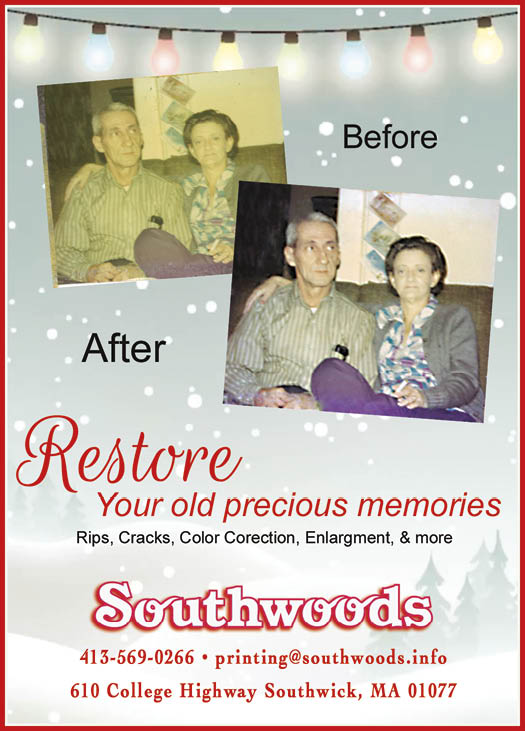


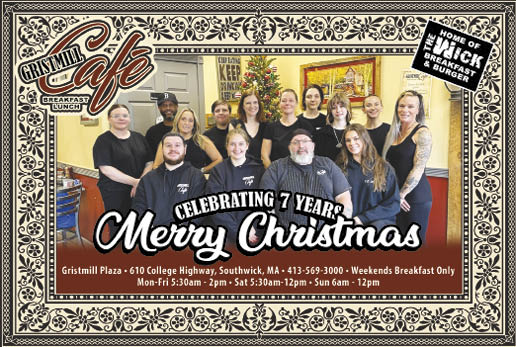

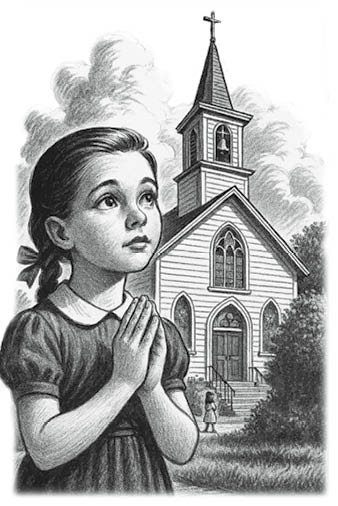
My Childhood ........Chapel

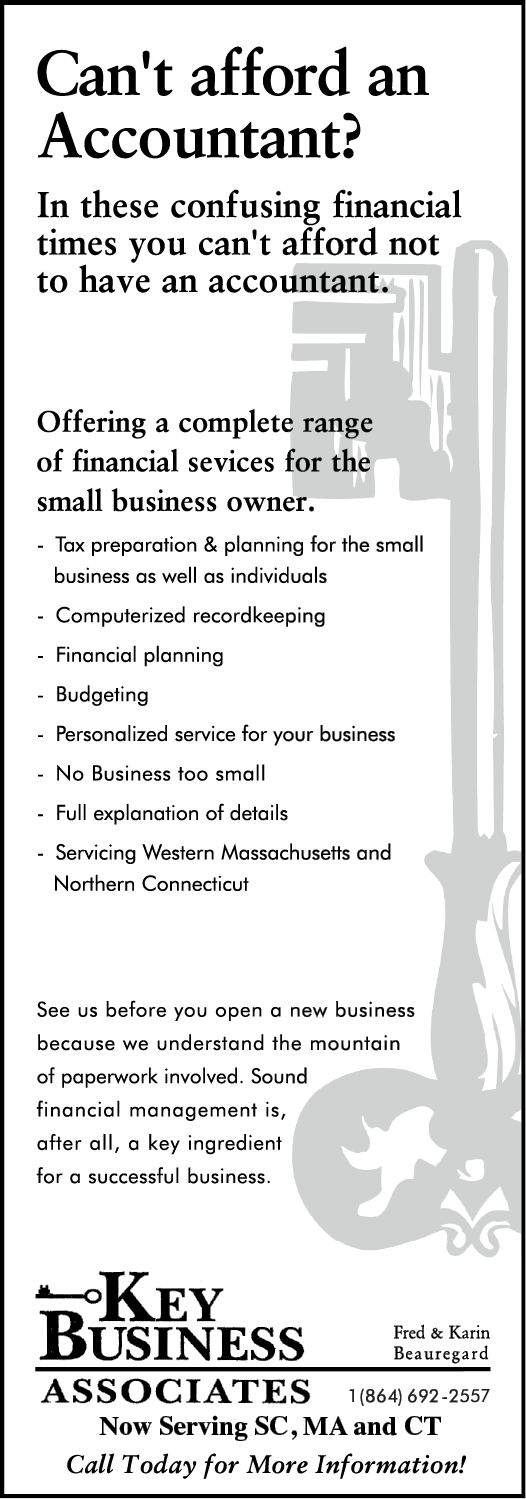




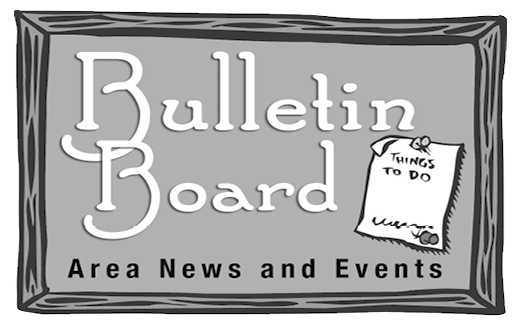
To include your event, please send information by the 1st of the month. We will print as many listings as space allows. Our usual publication date is around the 10th of the month. Email to: magazine@southwoods.info.
YMCA Westfield
Holiday Challenge
Westfield, MA — Spread some kindness and decorate our tree! Get in the spirit of the holidays, and preform acts of kindness to those around you - both people you know and people you don’t. How it Works: We will have an empty Christmas tree set up in the lobby, along with tags and markers at the front desk. Each time you preform an act of kindness for someone, write it down on a tag, and hang it on the tree. It can be anything like holding the door open for someone else, smile at people as you pass them, give a genuine compliment, make someone laugh, volunteer or donate! Let’s remember what the holidays are about. It’s better to give than to receive! Make someone’s day - and our tree - a little brighter.
Southwick Public Library
Upcoming Events
December 18th Teen Winter Cookie Decorating — Join us to decorate winter cookies in the community room! Registration is required. December 18, 2025 - 2:15pm - 3:15pm
December 19th Memory Cafe: Holiday Sing — What is a Memory Cafe? A Memory Cafe is open to those with memory loss or cognitive changes and their caregivers (family is welcome as well). A caregiver can be anything from a spouse, partner, friend, to a paid professional. Those of all ages are welcome to attend. Memory Cafes intend to provide a chance for socialization to reduce social isolation, a place for individuals to share, connect, and enjoy an experience. All sessions will include an activity, and most sessions will host a special guest or program. Refreshments will be served. This month, we’ll welcome Sarah from the Joy of Song to lead us in a holiday sing. Memory Cafe sessions will be held on the 3rd Friday of each month from 10:30am-noon.
December 22nd Stories and Song — Great for babies & caregivers to socialize and play. Tina brings toys, stories, and songs to share.
December 22nd Adult Craft: Birch Tree Painting — Join us to relax before the holidays and create a beautiful birch tree painting. Registration required and opens December 4 at 10am.
Springfield Symphony (Mosso)
Motown & the Philly Sound
January 17th, Springfield, MA − Magic melodies come to life as the pop, soul and R&B sounds of Motown and the famous hits from the Philly Sound face off in this exciting concert experience. Led by three extraordinary vocalists, this incredible evening is full of classic hit songs made famous by The Spinners, The Stylistics, The Temptations, Marvin Gaye, Lou Rawls, Diana Ross, Gamble & Huff and Percy Sledge. Philly Sound hit songs including Ain’t No Stopping Us Now, You’ll Never Find A Love Like Mine, Rock The Boat and Love Train share the stage with Motown smash hits including What’s Going On, I Heard It Through The Grapevine, and I’m Coming Out.
Christ Lutheran Church
Christmas Musical Choir & Orchestra
December 18 and Sunday December 21 Southwick, MA − Join us for “By Heaven’s Light.” Traditional carols, original music, lyrics, and scripture from the gospels of Luke and Matthew are all used to tell the Christmas story.
Local Christmas Mass Times
- Christ Lutheran, Southwick − Dec. 18th 11:30am, Dec. 24 6:00pm, 7:30pm, 9:00pm.
Southwick Congressional, Southwick − Dec. 24 6:30pm.
- Our Lady of the Lake, Southwick − Dec. 24 4:00pm, 10:00pm, Dec. 25 10:00am .
- St. Therese Parish, Granby, CT − Dec. 24 5:00pm, 10:00pm Dec. 25 8:15 am & 10:30 am
- Granby Congregational Church, UCC − Dec. 24 5:00pm, 8:00pm
- Pilgrim Covenant, Granby, CT − Dec. 24 6:00pm
- Sacred Heart, Suffield, CT − Dec. 24 4:00pm, 10:30pm, Dec. 25 10:00am
- St. Mary’s, Westfield, MA − Dec. 24 4:00pm, 6:00pm (Spanish) Dec. 25 10:00am
- Holy Trinity, Westfield, MA − Dec. 24 4:00pm, 11:30pm (Bilingual) Dec. 25 9:00am (Polish), 10:30am
- St. Peter & St. Casimir, Westfield, MA − Dec. 24 4:00pm, Dec. 25 9:30am
Southwick Civic Fund
Free Christmas Meal
The Southwick Civic Fund is looking to know if you are interested in receiving a Christmas meal this year. We will be offering meals with the option of pickup or delivery on December 25. Pickup will be at The Meeting House, 222 College Highway, at 11:00 a.m. If you would like to reserve a meal, please give us a call. You may reach an answering machine; if so, please leave your name and phone number and we will return your call. 413-569-1700 or 413-246-2277. Merry Christmas!


10-5
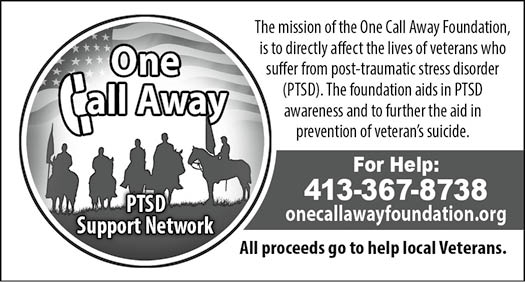
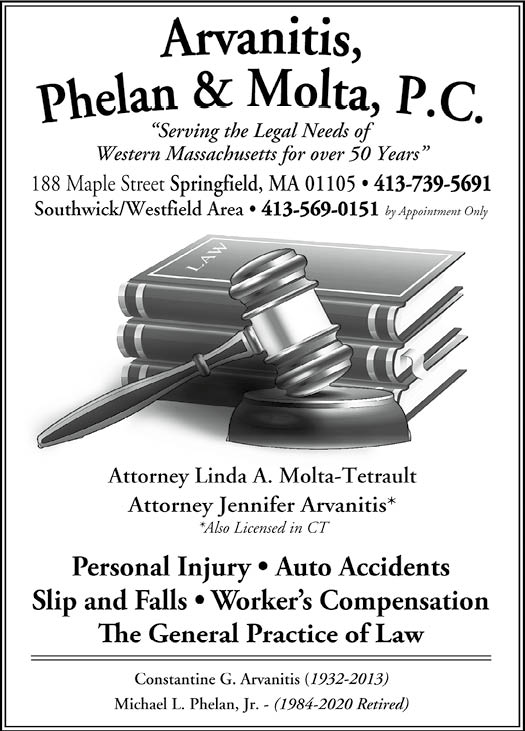

COUNTRY PEDDLER
CLASSIFIEDS
GOODS & SERVICES
DELREO HOME IMPROVEMENT for all your exterior home improvement needs, ROOFING, SIDING, WINDOWS, DOORS, DECKS & GUTTERS extensive references, fully licensed & insured in MA & CT. Call Gary Delcamp 413-569-3733
RECORDS WANTED BY COLLECTOR - Rock & Roll, Country, Jazz of the 50’s and 60’s All speeds. Sorry - no classical, showtunes, polkas or pop. Fair prices paid. No quantity too small or too large. Gerry 860-402-6834 or G.Crane@cox.net
GOODS & SERVICES
Lakeside Property management - For all your landscaping needs. Mowing, new lawn installs, sod, mulch/stone installation, bush trimming, retaining walls, snow plowing/removal, etc. Serving Southwick, Suffield, Granby, Agawam, Westfield, Simsbury. Residential and commercial. Call Joe 413-885-8376. Give us a call and let us get that property looking the way you want it! Now accepting major credit cards.
The granby motel- 551 Salmon Brook Street Granby, CT 06035. Room for rent, weekly, daily, & monthly. Wifi available. Stove, Refrigerator, Kitchen. LONG TERM RENTAL AVAILABLE AT AFFORDABLE PRICE. Ask for Mike Shaw. 860-653-2553
St. Jude’s Novena - May the sacred heart of Jesus be adored, glorified, loved and preserved throughout the world now, and forever. Sacred Heart of Jesus pray for us. St. Jude, Worker of Miracles, pray for us. St. Jude, Helper of the Hopeless, pray for us. Say this prayer 9 times a day. By the 8th day your prayer will be answered. It has never been known to fail. Publication must be promised. Thank you St. Jude. ..- MM
St. Jude’s Novena - May the sacred heart of Jesus be adored, glorified, loved and preserved throughout the world now, and forever. Sacred Heart of Jesus pray for us. St. Jude, Worker of Miracles, pray for us. St. Jude, Helper of the Hopeless, pray for us. Say this prayer 9 times a day. By the 8th day your prayer will be answered. It has never been known to fail. Publication must be promised. Thank you St. Jude. ..- DG
St. Jude’s Novena - Two Favors received. May the sacred heart of Jesus be adored, glorified, loved and preserved throughout the world now, and forever. Sacred Heart of Jesus pray for us. St. Jude, Worker of Miracles, pray for us. St. Jude, Helper of the Hopeless, pray for us. Say this prayer 9 times a day. By the 8th day your prayer will be answered. It has never been known to fail. Publication must be promised. Thank you St. Jude. ..- RMG










